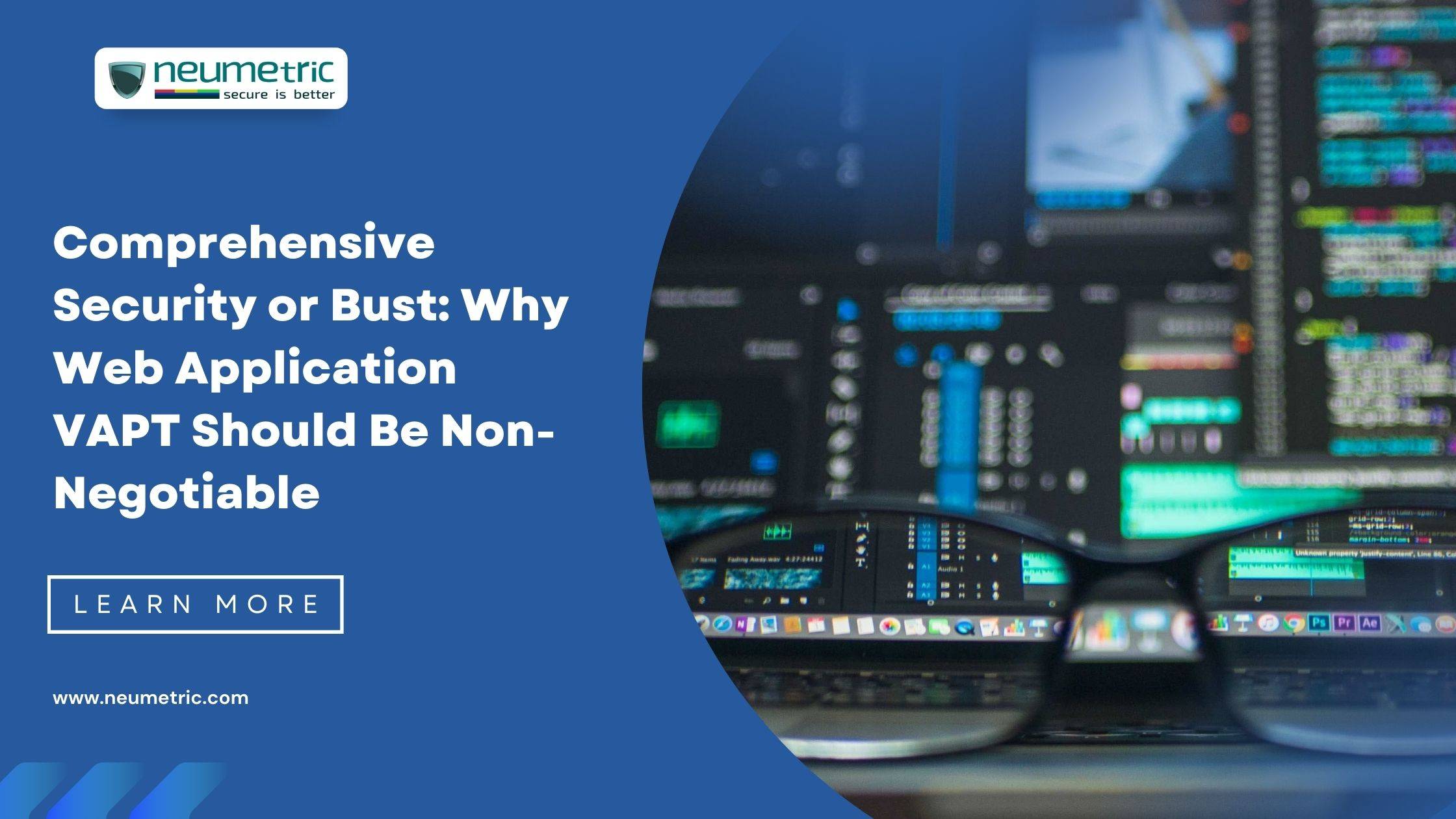Table of Contents
ToggleIntroduction
In an era dominated by digital interactions, the security of web applications stands as a paramount concern. As technology advances, so do the tactics of malicious actors seeking to exploit vulnerabilities for various purposes. The surge in cyber threats has catapulted web application security to the forefront of organisational priorities. To fortify our digital landscapes against potential breaches, one indispensable practice has emerged – Vulnerability Assessment & Penetration Testing (VAPT).
In this rapidly evolving digital age, the dynamic nature of cyber threats necessitates a proactive approach to security. Understanding the landscape of web application vulnerabilities & deploying effective measures such as VAPT is crucial for organisations aiming to safeguard sensitive data & maintain the trust of their user base.
Understanding Web Application Vulnerabilities
The digital realm is rife with vulnerabilities, & web applications are no exception. From the notorious SQL injections to the elusive cross-site scripting, these vulnerabilities create gateways for cyber assailants. Real-world examples abound, with instances where prominent entities fell victim to security breaches due to overlooked vulnerabilities. The evolving cyber threat landscape accentuates the pressing need for proactive security measures that go beyond conventional defences.
Organisations must delve into the specifics of common vulnerabilities, understanding how they can be exploited, to develop effective strategies for defence. The continuous evolution of hacking techniques requires a dynamic & adaptive response, making regular updates to security protocols & practises paramount.
Importance of VAPT in Web Application Security
VAPT serves as a vigilant guardian, identifying vulnerabilities before they become exploits. Its proactive nature is pivotal in preventing data breaches & thwarting unauthorised access. The success stories of organisations that have embraced comprehensive VAPT speak volumes. Through diligent testing & strategic fortification, these entities have not only shielded themselves from potential attacks but have also set a benchmark for secure web application development.
The importance of VAPT lies not just in identifying vulnerabilities but also in addressing them promptly. It fosters a security-first mindset, ensuring that web applications are developed & maintained with a robust defence strategy, reducing the surface area for potential exploitation.
Regulatory Compliance & Legal Implications
Legal frameworks & regulations increasingly demand robust web application security. Non-compliance doesn’t merely result in red tape; it invites severe consequences. Legal actions against companies with insecure applications are becoming more common, & case studies provide stark reminders of the legal ramifications stemming from inadequate web application security. In this digital age, the law is catching up, & ignorance is no longer an excuse.
Organisations must recognize the legal landscape surrounding web application security & view compliance not just as a regulatory obligation but as a fundamental aspect of responsible & ethical business practices. Demonstrating a commitment to security compliance can be a valuable asset in building trust with users & stakeholders.
The Cost of a Security Breach
Beyond legal repercussions, the financial toll of a web application security breach is staggering. The aftermath extends beyond immediate financial losses, affecting brand reputation & customer trust in the long run. A comparative analysis unveils a stark reality: the cost of VAPT pales in comparison to the financial & reputational damage incurred in the wake of a security incident.
Investing in VAPT is a proactive strategy that pays dividends in the long term. It acts as a form of insurance, mitigating potential financial losses & safeguarding the reputation of the organisation. Communicating the value of this investment to stakeholders is crucial for gaining support & commitment to robust security measures.
Best Practices in Web Application VAPT
Understanding the VAPT process is crucial. From vulnerability scanning that identifies potential weak points to penetration testing that simulates real-world attacks, the process is comprehensive. Continuous monitoring & periodic assessments ensure that security remains dynamic & adaptive. Collaboration between security teams & developers is integral, fostering an environment where VAPT becomes an intrinsic part of the development lifecycle.
Organizations should establish a well-defined & regularly updated VAPT strategy. This involves not only conducting assessments but also incorporating the findings into the development lifecycle. Collaboration ensures that security is not an afterthought but an integral part of the software development process, enhancing the overall security posture of web applications.
Challenges & Future Trends in Web Application Security
Implementing effective VAPT is not without its challenges. Understanding these hurdles is the first step toward overcoming them. As technology evolves, so do the threats, & emerging trends & technologies in web application security offer a glimpse into the future. The discussion extends beyond the present, exploring the evolving role of VAPT in the broader cybersecurity landscape.
Challenges may include the need for skilled professionals, the complexity of modern applications, & the speed at which new vulnerabilities emerge. Addressing these challenges requires a commitment to ongoing education & training for security professionals, as well as the integration of automated tools to augment human capabilities.
Conclusion
In conclusion, the non-negotiable nature of web application VAPT cannot be overstated. The digital landscape demands proactive security measures, & VAPT emerges as a beacon in this pursuit. A call to action echoes for organisations to prioritise & invest in comprehensive security measures. As we navigate the digital future, the critical role of VAPT stands as an unwavering pillar, safeguarding our online experiences.
Ensuring the security of web applications is not just a technical necessity but a strategic imperative for organisations aiming to thrive in an interconnected & digitised world. The adoption of comprehensive security measures, with VAPT at its core, is not only a proactive defence against cyber threats but a commitment to the trust & well-being of users & stakeholders alike.





